- Home
- Encyclopedia
- Crossing Wyoming: Kit Carson and a Changing West
Crossing Wyoming: Kit Carson and a Changing West
The trapper and mountain man Kit Carson traversed what’s now Wyoming dozens of times. Little is known of most of those trips. But of one year we have a close account—1842, when Carson guided a young Lt. John C. Frémont of the U.S. Army Corps of Topographical Engineers up the old fur-trade caravan route to South Pass, around to the west side of the Wind River Mountains and back east by the same route.
Neither Carson nor Frémont was famous yet. Carson was in his early thirties, well known in the Rocky Mountains but unknown otherwise. Frémont, too, was little known, but already had big connections.
He had recently married 18-year-old Jessie Benton, daughter of U.S. Senator Thomas Hart Benton of Missouri. The senator was intent on seeing the United States expand across the continent. He saw the young, ambitious Frémont, historians agree, as a tool to realize his plans. And Frémont needed Carson’s wilderness skills to get him where he needed to go.
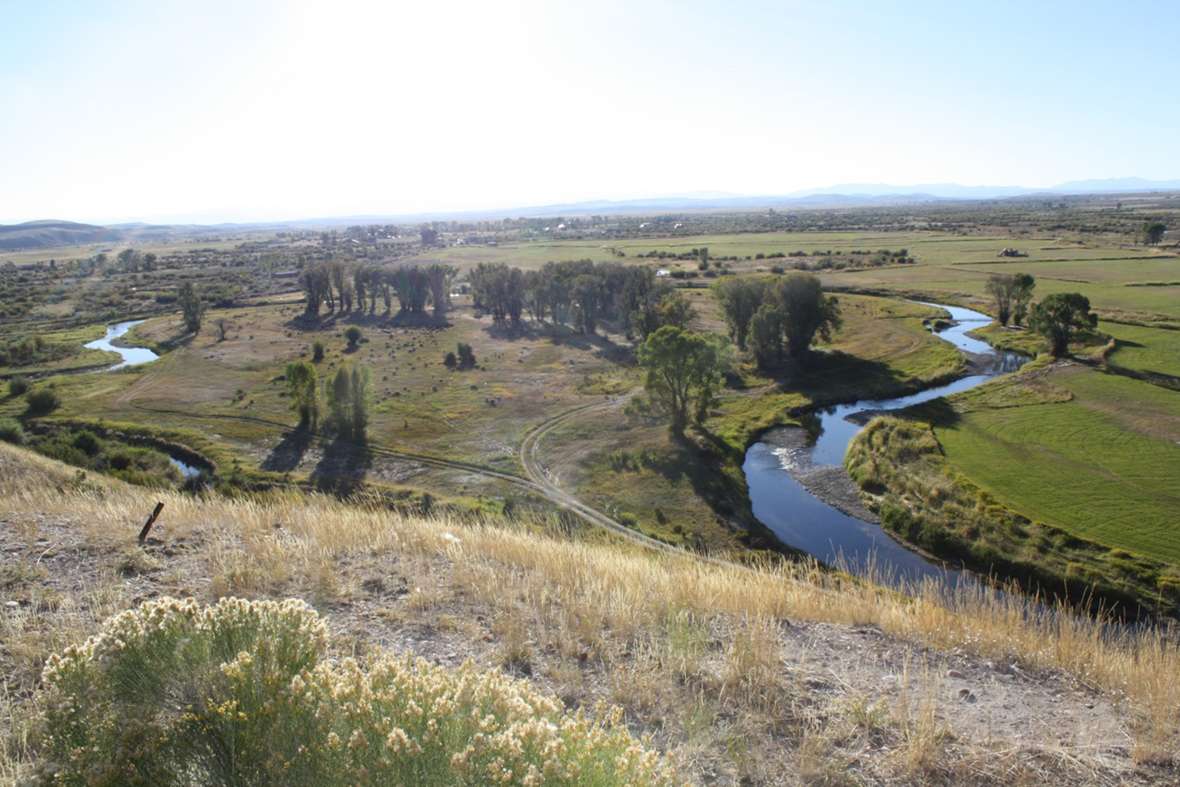
Early life and the beaver trade
Christopher “Kit” Carson was born in Kentucky in December 1809 and moved with his family about two years later to Cooper’s Fort, near Boone’s Lick, Mo. His father died when he was 8 years old. It was a frontier life: Nearly all white adult males belonged to local militias, violence between Euro- and Native Americans was well known and stories about it were told and retold.
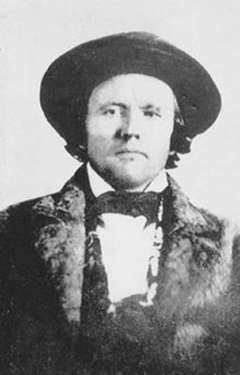
In 1824, Carson’s mother apprenticed him to a saddlemaker in Franklin, Missouri, near what then was the east end of the Santa Fe Trail. In August 1826, not yet 17 years old, Carson ran away from his apprenticeship and joined a trading caravan heading for Santa Fe, then still part of Mexico.
From Santa Fe he soon went to Taos, 60 miles north in the mountains, a town of 3,500 with a mix of Indian, Hispanic and a smattering of Anglo culture. Taos was a center for the beaver trade and, as it was far from Mexican customs agents, for making illegal whiskey. After three years doing odd jobs Carson joined a California-bound trapping and trading expedition led by trapper Ewing Young of Taos. They took a southern route, and after two years were back in Taos by April 1831.
Henry Inman, who knew Carson on this trip, described him in a memoir years later as “brave but not reckless . . . Under the average stature, and rather delicate-looking . . . nevertheless a quick, wiry man, with nerves of steel and possessing an indomitable will . . . full of caution, but show[ing] a coolness in the moment of supreme danger that was good to witness.”
In the fall of 1831, Carson made his first beaver hunt to the northern Rockies with a Rocky Mountain Fur Company trapping brigade led by Tom Fitzpatrick. The trip marks the beginning of Carson’s life as a full-time trapper and mountain man.
From the parks of Colorado to the headwaters of the Missouri, he worked sometimes with the big brigades and sometimes with small parties of so-called free trappers. An account of his life that Carson dictated in the mid-1850s—Carson himself could sign his name but was otherwise illiterate—is full of fights, scrapes, hard traveling and close calls from his beaver-trapping years. Around the edges, too—and unmentioned by him in the autobiography—there appears to have been a love story.
The Rocky Mountain fur-trade rendezvous in 1835 was held near the confluence of Horse Creek and the Green River in today’s Sublette County, Wyo. Here, a dispute arose between Carson and a camp bully named Chouinard. Some biographers speculate that the affections of an Arapaho girl, Waa-nibe—Singing Grass—may have been behind the friction. After Chouinard had severely beaten two or three other men, Carson confronted him. Both men mounted horses and armed themselves, Carson with a pistol and Chouinard with a rifle. At close range both guns went off. Carson’s ball hit Chouinard in the arm; Chouinard’s cut through Carson’s hair and the powder burned his eye.
Carson the family man
Carson married Waa-nibe about this time and their daughter, Adaline, was born about 1837. In the fall of 1838, Carson came down to winter in Brown’s Hole, on the Green River at the present Wyoming-Colorado-Utah border, and his biographers assume Waa-nibe and Adaline were with him.
At least one biographer believes their second baby—no name has survived for that child—was born in 1839 while Carson was traveling north to the Salmon and Yellowstone Rivers. Waa-nibe died not long afterward, probably in Brown’s Hole, most likely from difficulty connected with the birth.
On hand in 1840 at the last rendezvous, again at Horse Creek—a depressing affair as it was clear to everyone that beaver supply and prices were both collapsing—was Father Pierre-Jean De Smet, the Roman Catholic missionary. Carson recalled in his dictation that the priest baptized “forty odd children” at the event; some biographers, again without confirmation from the trapper himself, have speculated that Carson’s two daughters were among them.
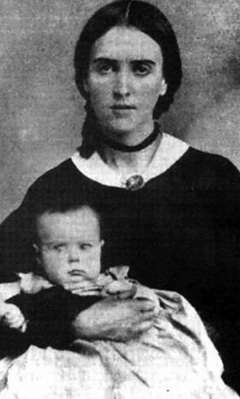
In any case, Carson needed a mother for the girls. In 1841 he took a job for wages as a hunter at Bent’s Fort, on the Santa Fe Trail in present southeast Colorado, where he had long been acquainted with the proprietors and with the polyglot community there. Here he married a new wife, Making Out Road, a Cheyenne woman, on whom he appears to have depended to take care of Adaline and her sister.
Around this time Carson was still making regular trips back to Taos, and he seems to have fallen there for Josefa Jaramillo, of a prominent family herself and sister-in-law of Charles Bent, governor of New Mexico, still at the time a part of Mexico. In January 1842, Carson was baptized a Catholic at Taos, almost certainly a sign of his intentions toward Josefa. That spring, at Bent’s Fort, Making Out Road divorced him in the Cheyenne fashion, by placing all his belongings outside her tipi. Leaving the younger child with friends in Taos, he took Adaline with him to Missouri to live with his sisters and go to school.
In February 1843, he married Josefa at the parish church in Taos. She was not yet 15; he was 33. She was by some accounts taller than he, and quite beautiful. They eventually had eight children.
Frémont’s first expedition
Between the time of his trip to Missouri with Adaline and his wedding to Josefa, Carson made what he afterward regarded as the most important meeting of his life—on board the steamboat Rowena, heading back west across Missouri on the Missouri River. There he met Frémont, on the first of five exploring expeditions to the West. Frémont hired Carson on the spot to guide his expedition to the Rocky Mountains. Carson according to nearly all accounts was cautious, modest, competent and cool-headed, and in those traits quite different from the reckless, fame-seeking and erratic Frémont.
The young lieutenant’s orders were to explore the familiar fur-trade route up the Platte, North Platte and Sweetwater rivers to South Pass, taking scientific observations with an eye toward making a good map. The party included Frémont, Carson, two dozen frontiersmen and voyageurs from St. Louis and a German-born cartographer, Charles Preuss.
Near Chimney Rock on the North Platte, they met frontiersman Jim Bridger, who warned them that groups of Cheyenne and Oglala Sioux were out for retribution. These same warriors had been defeated the year before by a band of trappers and Shoshone led by Henry Fraeb, on the Little Snake River near present Baggs, Wyo. Fraeb had been killed, but the Sioux and Cheyenne had been driven off and some of them killed as well.
Carson agreed with Bridger that the threat was serious, and, at Fort Laramie, dictated a will—an action that made the voyageurs nervous. Frémont, however, chose to ignore the warning and press onward. He made a speech to some Sioux at the fort, declaring that when U.S. Army officers were ordered to do a job, they did it.
They continued up the North Platte and the Sweetwater to South Pass—a route that soon would become better known as the Oregon Trail. Ignoring his orders, Frémont continued west, across the Continental Divide—at this point he was leaving the United States and entering the Oregon country—and around to the west side of the Wind River Mountains.
He decided to climb the highest peak they could see, convinced, incorrectly, that it was the highest in the Rockies. They set up a base camp near a lake. Carson led Frémont and a smaller party upward. Frémont was stricken with dizziness and headaches—probably altitude sickness—and they had to stop.
Preuss, the cartographer, whose skeptical account always makes a useful alternative to Frémont’s romantic one, mentions a quarrel. Frémont thought Carson was walking too fast, and sent him back down to stay with the mules while naming another of the voyageurs as guide up the mountain. The rest of the party completed the climb though they had to go without food for a day or two to do so. Afterward, Frémont and Carson patched up their differences and the expedition headed for home.
At Independence Rock on the Sweetwater, they inflated and launched an India rubber boat they had carried the entire trip. The Sweetwater was too shallow; they pushed, dragged and hauled the boat several miles before deflating it, loading it back onto the mules and carrying it several miles more down to the North Platte.
They found more than enough current there. Frémont proposed to take Preuss and seven other men, the choicest food, the journals and all the scientific instruments with him in the boat, and send the rest of the party overland—with Carson. Beforehand, all camped where the Sweetwater joined the North Platte. Below, they could hear the roar of the rapids.
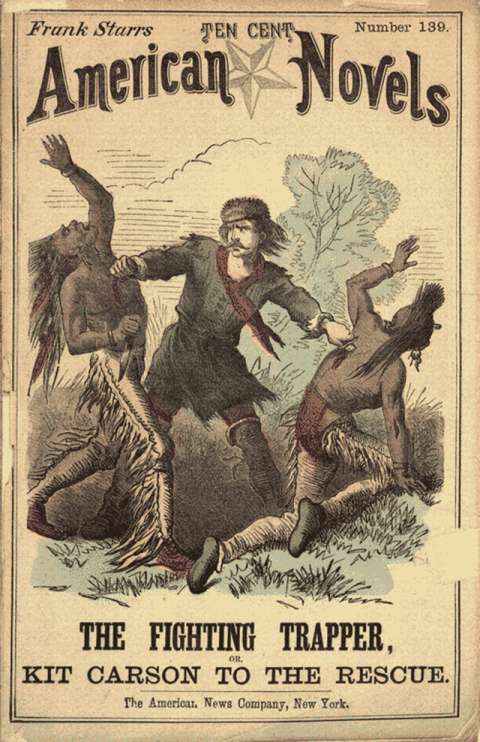
In the canyon the next day—now called Fremont Canyon and much of it under Alcova Reservoir—the boat hit a rock and flipped; fortunately no one drowned. Many of the notebooks and most of the instruments were lost; the rock tore a hole in the boat and ruined it. The fact that Frémont sent Carson with the other party may show the quarrel had lingered—or it may show that Carson was the one he trusted best. The two parties joined up downstream from where Alcova Dam stands today, and continued down the trail.
They reached Fort Laramie in safety on August 31. Frémont and the rest continued back to Missouri, and Frémont and Preuss to Washington, D.C. Carson turned south to Taos. Frémont wrote his report that winter with substantial help from his wife, Jessie, and, together with a map drawn by Preuss of the corridor the expedition had traveled, it was delivered to the Senate in March 1843. Soon, the Senate ordered 1,000 copies printed for sale to the public.
Fame
Frémont’s exploits, combined with the vivid government reports he and Jessie wrote together, would within the next decade make him as famous as any man in America. The reports made Carson famous too, showing the scout as unfailingly heroic.
At one point on the first expedition, along the Blue River in what’s now Nebraska, the party received a report of a large band of Pawnee nearby; Carson rode off to see what was up. It turned out to be six elk, not the 27 warriors reported, but Frémont’s portrayal of the horseback Carson is a good example of the explorer’s attitude toward his friend. “Mounted on a fine horse,” Frémont wrote, “without a saddle, and scouring bareheaded over the prairies, Kit was one of the finest pictures of a horseman I have ever seen.”
Frémont’s reports also showed Carson as a man who knew American Indians well and was unafraid, when he thought it necessary, to fight them.
Descriptions like these, notes Carson biographer Tom Dunlay, “mark the real beginnings” of Carson’s fame as a frontier hero. With publication of Frémont’s reports, the scout’s fame spread quickly. Suddenly, he was more famous than any of his mountain-man peers—men like Jim Bridger and Tom Fitzpatrick, for example—who had been brigade leaders and company partners in the mountain fur trade, a status Carson never attained.
Dime novel writers latched on to Carson’s fame, churning out titles like Kit Carson, The Prince of the Gold Hunters, or, the Adventures of the Sacramento and Kiowa Charley, the White Mustanger or Kit’s Last Scalp Hunt. These accounts aimed to thrill, and were entirely fictional. In 1856 the illiterate Carson, wanting to insert some fact and truth into the equation, dictated the story of his life to a clerk. The resulting 1858 book, Kit Carson, the Nestor of the Rockies, from Facts Narrated by Himself, also charges relentlessly from conflict to conflict.
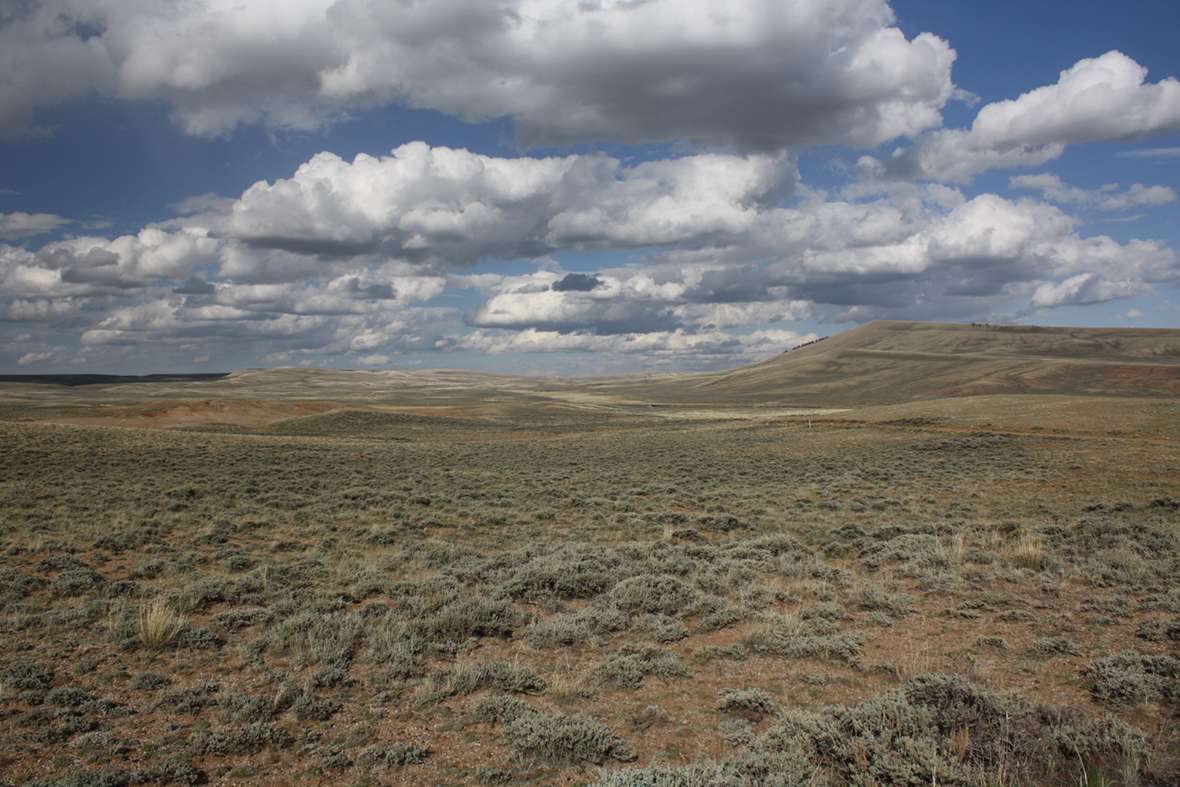
The second and third expeditions
In 1843, Frémont started west again, this time on the Santa Fe Trail. Carson caught up with the expedition near present Pueblo, Colo. After exploring fruitlessly for a new pass up the Cache la Poudre River above present Fort Collins, Colo., they headed northwest, roughly following the route of modern U.S. Highway 287, through what are now Laramie and Rawlins, Wyo., and north to the Sweetwater.
From South Pass they took the route to the Columbia River already beginning to be called the Oregon Trail. But instead of heading back east as he’d been ordered, Frémont turned south along the east front of the Sierras, crossing them in winter. He may have been under secret orders to spy on California, still at the time part of Mexico. Weak and starving, the party arrived at Sutter’s Fort in March 1844. From here they continued south through California’s central valley and turned home near present Bakersfield. They traveled northeast across deserts and mountains to Brown’s Hole and were back at Bent’s Fort in July 1844. As before, Frémont continued east; Carson returned to Taos.
After this trip, Frémont and Preuss reported to the world the existence of the Great Basin, a vast stretch of the West covering most of what are now Utah and Nevada whose waters drain neither east nor west but disappear in sinks or evaporate from salty lakes. On this trip, Frémont had risked his men’s lives more dangerously and more often than he had even on the first expedition. Carson’s competence, knowledge of the country and steady temper were crucial to their survival.
Carson met Frémont a third time in August 1845. From Bent’s Fort they headed up the Arkansas and crossed the Colorado and Green Rivers to Salt Lake—avoiding what’s now Wyoming entirely. War with Mexico was approaching; Frémont’s orders were secret and it’s still unclear what they were, but once in California his actions became steadily more military. The men of the expedition clashed with Indians on the Sacramento River and later at Klamath Lake, killing scores of tribespeople. He took part in the so-called Bear Flag revolt of Anglo settlers against Mexican authorities and eventually linked up with Commodore Robert Stockton, in charge of U.S. forces in California.
Dispatch carrier, guide, stockman
In July 1846, Stockton proclaimed California a U.S. territory and Frémont its so-called military governor. They chose Carson to carry dispatches from San Diego to Washington, D.C. In the next few years, Carson crossed the continent twice more. In Washington in the spring of 1847, he stayed with Jessie Benton Frémont at the Benton household, and visited President Polk. He visited his daughter Adaline in Missouri on his way west again and was back in California by October, in time to learn Frémont had been arrested by Gen. Stephen Watts Kearny for insubordination. Spring 1848 saw Carson traveling east from Los Angeles via Taos, again with letters for Washington. In August he stood up with Jessie Frémont at her son’s baptism. By October he was back in Taos, this time for a longer visit.
Meanwhile, the war with Mexico ended and California, New Mexico, what are now Arizona and Utah and parts of Wyoming and Colorado all were annexed by the United States. War continued, however, between New Mexican authorities and the region’s native people. In the winter of 1849, Carson guided a Taos-based detachment of dragoons against the Jicarilla Apache.
By this time Carson had established a ranch at Rayado, east of Taos, where the plains meet the mountains. In the spring of 1850, he and an old trapping friend, Tim Goodale, drove three or four dozen mules and horses north to Fort Laramie to sell. The fort was then booming with the emigrant trade—mostly men without families traveling to the gold fields of California.
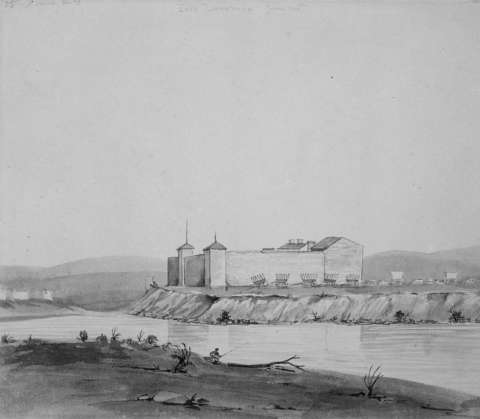
Carson and Goodale drove and grazed the animals slowly along the Front Range in what’s now Colorado so they would be sleek and strong when they arrived. “We disposed of our animals to good advantage,” Carson told his interviewer in 1856.
At the fort, an old-timer or perhaps only another of tens of thousands of men bound that year for California, walked up to him and asked Carson if he was, in fact, Kit Carson.
“Well, sir. I reckon I am,” was the reply, as Carson biographer David Remley tells the story.
The man looked him carefully up and down.
“You cain’t come that over on me,” the traveler said. This plain-looking, bowlegged little man, stoop-shouldered and smaller than most, was too much of a disappointment, too different from the dime-novel hero that Carson had already become. “You ain’t the kind of Kit Carson I’m a-looking for,” the man said.
A final trapping expedition
In the spring of 1852, apparently as much for nostalgia as for profit, Carson and his longtime Taos friend Lucien Maxwell assembled a group of 18 trapper comrades from the old days for a long beaver hunt. The northern end of their route, at least, took them into what’s now Wyoming. Carson told his interviewer a few years later that they traveled and trapped north from Taos through the parks of Colorado, then down the South Platte to the plains, north to the Laramie Plains and back south to North Park, Colorado, to Middle and South parks, down the Arkansas and then turned further south, home to Rayado over Raton Pass. This was the only trapping expedition Carson ever led.
Carson’s account gives no more detail than that, and none of the names of the other trappers. But decades later, the longtime mountain man Jim Baker told the Denver Republican in 1893 that he, too, had been on the trip, as had Jim Bridger. From the Laramie Plains or perhaps from North Park, they traveled down the North Platte, according to Baker, up the Sweetwater, over to the Wind River drainage and finally wintered on the Green River. Whether they wintered at the old rendezvous grounds at Horse Creek, at Brown’s Hole or somewhere else, Baker didn’t say. In the spring they trapped along the Yampa and Little Snake Rivers, according to Baker, before returning to Rayado.
Trailing sheep
In the spring of 1853, Carson, Maxwell and another partner borrowed money and traveled to the lower Rio Grande, where they bought 6,500 churro sheep—a breed descended from Spanish stock and bred in the Southwest by the Navajo and Hopi. They trailed them north to Rayado, then along the Front Range to Fort Laramie, where they turned west to South Pass and then over the California Trail to California. Moving slowly with the grazing animals, they took six months to make the trip.
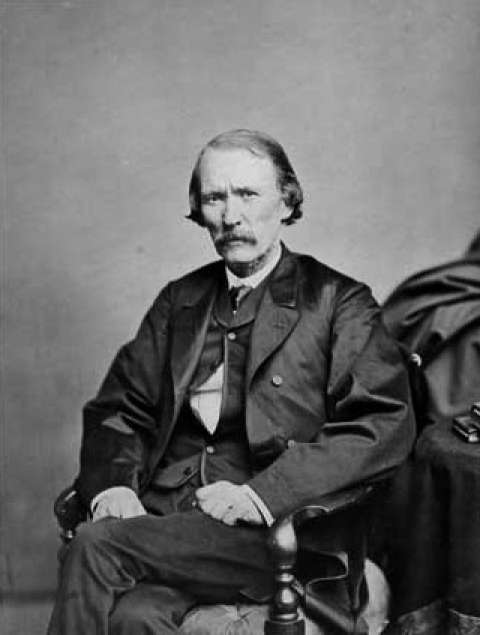
Supposedly they bought the sheep for 50 cents per head and sold them for $5.50 each—enough for Carson to buy a ranch in California for his daughter Adaline and her husband, and, once he got home, to buy Josefa a new, treadle-powered Singer sewing machine. By way of the southern route, he was back in Taos by Christmas Day, 1853.
Ute agent and soldier
He lived 15 more years, most of that time based in Taos, spending time when he could with his growing family. But his career took a modern turn: The beaver trapper and guide became a longtime government employee, first as the United States agent to the Moache Ute tribe, and then as a soldier—not an army scout, but a uniformed officer. He led Union troops against the Texas Confederate invasion of New Mexico in 1862. Later he led troops against the Navajo, and finally, in 1867, against the Kiowa and Comanche.
Carson’s campaign against the Navajo has complicated his reputation ever since. He and his troops in 1864 began rounding the people up in their heartland around Canyon de Chelly and driving them east 400 miles to a reservation on the Bosque Redondo, in eastern New Mexico. The operation took years. It was called the Long Walk—a Navajo Trail of Tears. Around a quarter of the people died on the way or in captivity.
Late in 1867, the Army asked one more task, that Carson accompany a Ute delegation to Washington, D.C. to sign a treaty taking away most of their lands in exchange for a reservation on Colorado’s western slope. By this time, his family was living at Fort Lyon, in southeastern Colorado territory. He traveled east via the new Kansas Pacific Railroad. From Washington, where he visited Frémont, the delegation continued on to New York, where Carson visited Jessie Frémont, and to Boston.
Failing fast, he was back in Colorado in time for the birth of his and Josefa’s eighth child, a daughter they named Josefita, in April 1868. Forty-year-old Josefa died two weeks later. Carson died May 28, 1868, at Fort Lyon. He was 58.
The trip with the sheep, however, appears to have been the last time Carson crossed what’s now Wyoming. Like many in his lines of work—beaver trappers, army scouts, guides, stockmen, soldiers and Indian agents—Carson was on the move in a constantly changing West.
Resources
Primary Sources
- Frémont, John Charles. Narratives of Exploration and Adventure. Allan Nevins, ed. New York: Longmans, Green & Co., 1956.
- ___________________. Report of the Exploring Expedition to the Rocky Mountains in the Year 1842, and to Oregon and North California in the Years 1843-1844. Washington, D.C.: Gale and Seaton, Printers, 1845. Accessed Nov. 11, 2015, at https://books.google.com/books?id=5TI5AQAAMAAJ&source=gbs_book_similarbook.
- Preuss, Charles. Exploring with Frémont: The Private Diaries of Charles Preuss, Cartographer for John C. Frémont, on his First, Second and Fourth Expeditions to the Far West. Translated and Edited by Erwin G. and Elisabeth K. Gudde. Norman, Okla.: University of Oklahoma Press, 1958.
Secondary Sources
- Dunlay, Tom. Kit Carson and the Indians. Lincoln, Neb.: University of Nebraska Press, 2000.
- Rea, Tom. Devil’s Gate: Owning the Land, Owning the Story. Norman, Okla.: University of Oklahoma Press, 2006. Chapter 3, “The Pathfinder’s Lost Instruments,” 34-52.
- Remley, David. Kit Carson: Life of an American Border Man. Norman, Okla.: University of Oklahoma Press, 2011.
- Van Pelt, Lori. Dreamers and Schemers: Profiles from Carbon County, Wyoming’s Past. Glendo, Wyo.: High Plains Press, 1999. 19, 21. In her biographical sketch of Jim Baker, Van Pelt cites “Jim Baker in Town,” Denver Republican, June 8, 1893 as a source for Baker’s account of the long beaver hunt led by Carson in 1852.
Illustrations
- The photos of Horse Creek and South Pass are by Tom Rea. The dime novel cover is from the Library of Congress, used with thanks. The 1849 Wilkins sketch of Fort Laramie is item number WHS-3935 from the Wisconsin Historical Society, used with permission and thanks. The rest of the photos are from Wikipedia, with thanks.
